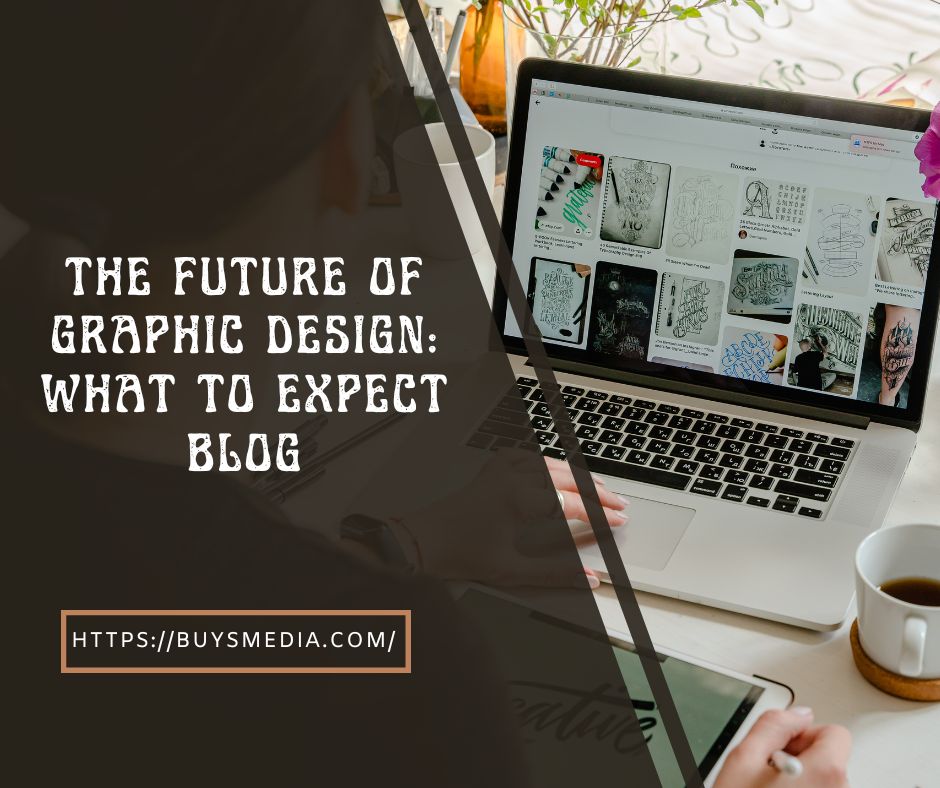Introduction
A. Characterizing a realistic plan and its centrality in today’s world In a visually-driven society, a realistic plan plays a pivotal part in passing on messages and captivating groups of onlookers. It includes the craftsmanship of combining visual components, typography, and format to communicate thoughts successfully. From logos and websites to bundling and promotions, the realistic plan is all over, forming our recognition of brands, items, and administrations.
B. The advancing scene of realistic plan Over a long time, realistic planning has advanced from writing and paper to computerized stages, revolutionizing the inventive handle. With innovative headways, architects presently have a cluster of apparatuses and procedures at their transfer to bring their dreams to life.
C. They got to revolutionize imagination within the field As the demand for interesting and innovative designs proceeds to develop, there’s a squeezing got to reevaluate imagination within the realistic plan industry. Creators must adjust to developing innovations and unused approaches to remain ahead of the bend and convey cutting-edge arrangements to their clients.
Past Innovations in graphic design

A. Investigation of noteworthy breakthroughs in realistic plan From Gutenberg’s printing press within the 15th century to the improvement of the present-day plan program, the realistic plan has seen various points of reference all through history. Each breakthrough has moved the industry forward, empowering architects to thrust boundaries and test with modern imaginative concepts.
B. The effect of digitalization on realistic planning hones The appearance of computers and planning programs revolutionized the field of realistic planning. Originators picked up exceptional control over their manifestations with the capacity to alter and control advanced components. This move quickened the imaginative handle and extended the conceivable outcomes for visual communication.
C. Looking at conventional plan strategies and their restrictions Whereas digitalization brought approximately an unused time of plan conceivable outcomes, it is basic to recognize the qualities and confinements of conventional plan strategies. The hands-on approach of outlining and prototyping permits for a more material and natural inventive handle that can still educate and impact today’s computerized plan hones.
Technology’s Influence on Graphic Design
A. The rise of fake insights in plan forms Fake insights (AI) has developed as an effective apparatus in realistic plans, empowering architects to mechanize tedious errands and produce complex visual compositions. AI calculations can analyze endless sums of information and produce plan proposals, liberating designers’ time for more inventive and key considerations.
B. Expanded and virtual reality’s transformative effect on plan Increased reality (AR) and virtual reality (VR) have opened up unused measurements in realistic plans by making immersive encounters. Creators presently can consolidate advanced substance with the genuine world, permitting clients to connect with plans in ways never some time recently envisioned.
C. Investigating the potential of blockchain within the realistic plan industry Blockchain innovation presents energizing conceivable outcomes for the realistic plan industry, especially in terms of straightforwardness and copyright security. By making a decentralized and unchanging record, blockchain can guarantee the realness and possession of advanced resources, revolutionizing how creators share and ensure their work.
Collaborative Design Platforms

A. The control of crowdsourcing in realistic plan Crowdsourcing stages have changed the way plan ventures are drawn nearer, permitting businesses to tap into the collective inventiveness of a worldwide community. By saddling the different points of view and abilities of creators around the world, crowdsourcing empowers the creation of inventive and comprehensive plans.
B. Analyzing the viability of the plan considering techniques emphasizes the significance of compassion, emphasis, and collaboration within the plan handle. By including end-users and partners early on, creators can pick up profitable bits of knowledge and make arrangements that really meet their needs.
C. The rise of online plan communities and their benefits Gives a platform for architects to put, collaborate and share their work. These communities cultivate inventiveness, give profitable criticism, and offer openings for mentorship and proficient development.
Futuristic Design Tools
A. Deep learning and its implications for graphic design Deep learning, a subset of AI, enables computers to analyze and learn from vast amounts of data, resulting in more sophisticated design recommendations. By integrating deep learning algorithms into design software, designers can harness the power of machine intelligence to augment their creative process.
B. The integration of machine learning algorithms in design software Machine learning algorithms can analyze user behavior and preferences, enabling design software to personalize user experiences. This integration allows designers to create customized designs that resonate with individual users, enhancing engagement and brand loyalty.
C. The automation of repetitive design tasks Automation technologies, such as generative design and smart templates, can streamline repetitive design tasks, improving efficiency and freeing up designers’ time to focus on more vital and inventive perspectives of their work. By grasping mixed media designs, originators can make locks in and shareable substance that resounds with cutting-edge gatherings of people.
Interactive and Immersive Design Experiences
A. Understanding the user-centric approach to design User-centric design places the end-user at the center of the creative process, considering their needs, preferences, and behaviors. By putting users first, designers can create intuitive, immersive experiences that engage and delight audiences.
B. The influence of gamification in graphic design Gamification techniques, such as badges, leaderboards, and interactive challenges, can transform graphic design into a playful and engaging experience. By incorporating game elements, designers can captivate users’ attention and encourage desired behaviors.
C. Exploring the possibilities of interactive storytelling blends the power of storytelling with interactive design elements, enabling users to become active participants in the narrative. By creating interactive and immersive narratives, designers can captivate audiences on a deeper level, fostering emotional connections and memorable experiences.
Ethical Considerations in Design
A. Design’s social responsibility and sustainability Designers have a responsibility to consider the environmental and social impact of their work. By adopting sustainable design practices, minimizing waste, and considering the lifecycle of their designs, designers can contribute to a more sustainable future.
B. Addressing biases and inclusivity in graphic design should reflect the diversity of our society and challenge biases and stereotypes. Designers must be mindful of the cultural and social implications of their designs, striving for inclusivity and representation.
C. The implications of personalized design for privacy Personalized design, driven by data and user preferences, raises concerns about privacy and data security. Designers must navigate the delicate balance between personalization and protecting users’ privacy, ensuring that ethical considerations are at the forefront of their design decisions.
Human-Centered Design Thinking

A. Empathy-driven design approaches for enhanced user experiences Empathy-driven design places a strong emphasis on understanding users’ emotions, needs, and challenges. By truly empathizing with users, designers can create solutions that address their pain points and deliver meaningful and memorable experiences.
B. Inclusive design practices for diverse audiences Inclusive design aims to create products and experiences that are accessible and usable by individuals with diverse abilities and backgrounds. By considering diverse perspectives and incorporating universal design principles, designers can ensure their work is inclusive and reaches a wider audience.
C. Balancing aesthetics and usability in design Designers must strike a balance between aesthetics and usability to create visually appealing designs that are also functional and intuitive. By prioritizing the user experience and maintaining a focus on usability, designers can deliver impactful and engaging designs.
Revamping Brand Identity and Marketing
A. The role of graphic design in revitalizing brand identities Graphic design plays a pivotal role in shaping and revitalizing brand identities. Through strategic use of visual elements, typography, and color palettes, designers can convey a brand’s values, personality, and essence.
B. Innovations in visual storytelling for effective marketing Visual storytelling has become a powerful marketing tool, allowing brands to convey their messages compellingly and memorably. By leveraging visual narratives, designers can create emotional connections with audiences and drive brand engagement.
C. Exploring the integration of multimedia in brand communication The integration of multimedia elements, such as video, animation, and interactive content, enhances brand communication by providing a more immersive and dynamic experience. By embracing multimedia formats, designers can create engaging and shareable content that resonates with modern audiences.
Case Studies of Revolutionary Design Projects
A. Analyzing groundbreaking design campaigns and their impact By examining successful design campaigns, we can gain insights into the strategies and techniques that have revolutionized the industry. Case studies provide valuable lessons and inspiration for designers seeking to push boundaries and make a lasting impact.
B. Exploring captivating design projects from various industries Design innovation is not confined to a single industry. By exploring captivating design projects across different sectors, we can uncover the diverse applications and transformative potential of graphic design.
C. Lessons learned from successful design collaborations often result in groundbreaking ideas and solutions. By studying collaborative design projects, we can understand the benefits of teamwork, interdisciplinary approaches, and diverse perspectives in driving innovation.
The Human Designer in a Tech-Driven Era
A. Debunking fears of AI replacing human designers AI is not a threat to human creativity; instead, it amplifies designers’ capabilities. By embracing AI as a creative tool, designers can leverage their power to inspire new ideas, streamline processes, and elevate their work.
B. The evolving role and skill sets of graphic designers As technology reshapes the graphic design landscape, designers need to adapt and acquire new skills to thrive in a tech-driven era. Creativity, critical thinking, and adaptability remain essential, while proficiency in emerging technologies and data-driven design become increasingly valuable.
C. Nurturing creativity and critical thinking amidst technological advancements Technology should be seen as an enabler, not a replacement for human creativity and critical thinking. By harnessing the power of technology while preserving the essence of creative expression, designers can continue to push boundaries and redefine the future of graphic design.
Future Trends and Predictions

A. Anticipating AI-driven design assistants in the future As AI continues to advance, we can anticipate the emergence of AI-driven design assistants that enhance designers’ workflows. These intelligent tools will automate routine tasks and provide valuable insights, allowing designers to focus on high-level creativity and problem-solving.
B. Environmental sustainability as a core value in graphic design With growing concerns about the environment, graphic design will increasingly prioritize sustainability. Eco-friendly materials, energy-efficient processes, and a reduced carbon footprint will become integral to design practices, aligning with the global shift toward sustainability.
C. Design’s role in shaping the future of immersive technologies Graphic design will play a pivotal role in shaping the future of immersive technologies, such as AR, VR, and mixed reality. By harnessing the power of design and technology, we can create transformative and immersive experiences that blur the boundaries between the physical and digital worlds.
Summary – Rethinking the Future of Graphic Design
A. Key takeaways from the evolution of graphic design highlight the need for continuous innovation, adaptability, and a user-centric approach. Designers must embrace emerging technologies, collaborate effectively, and prioritize ethical considerations to thrive in an ever-changing landscape.
B. Embracing innovation while preserving fundamental design principles As graphic design evolves, it is essential to embrace innovation and experiment with new tools and techniques. However, designers must not forget the fundamental design principles that form the foundation of effective visual communication and aesthetics.
C. The endless possibilities awaiting the revolutionized world of graphic design By embracing the future of graphic design, designers can unlock endless possibilities. Through innovation, collaboration, and a commitment to user-centered design, the revolutionized world of graphic design holds tremendous potential to shape the way we communicate and interact with the world around us.
CHECK OUT ALSO:-The Importance of Typography in Graphic Design -Buys Media
FAQs
Q. What is the future job market for graphic designers?
A. The future job market for graphic designers looks promising, with increasing demand for creative professionals who can leverage emerging technologies, drive innovation, and create meaningful experiences across various platforms and industries.
Q. How can current designers adapt to the evolving landscape?
A. Current designers can adapt to the evolving landscape by continuously upskilling and embracing emerging technologies. By staying updated on industry trends, collaborating with fellow designers, and honing their creativity and critical thinking, designers can position themselves for success in a tech-driven era.
Q. Will AI completely replace human creativity in graphic design?
A. No, AI will not completely replace human creativity in graphic design. While AI can enhance and streamline certain aspects of the creative process, human intuition, imagination, and emotional intelligence are irreplaceable when it comes to generating unique and compelling design concepts.
Q. How can ethical considerations be incorporated into the design process?
A. Ethical considerations can be incorporated into the design process by prioritizing inclusivity, sustainability, and user privacy. Designers should be mindful of the impact of their work on individuals and society as a whole, striving for ethical and responsible design practices.





Leave a Comment